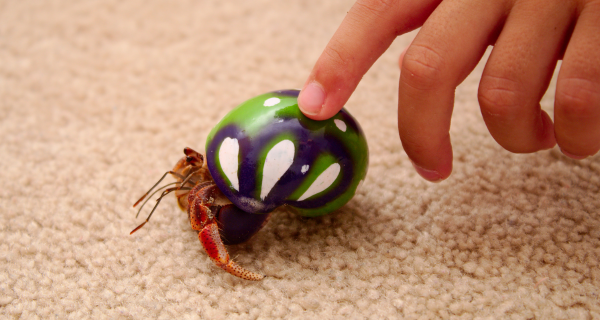

What do you keep hermit crabs in?
Crazy Crabs should be kept in a smooth sided container, such as a glass aquarium or plastic fish bowl or tank. As they are expert climbers, wooden or cardboard containers are not suitable. Crabs will chew on wood and cardboard. Choose a container that suits the number of crabs you want to keep in it. Remember to make sure there is room enough for a food and water bowl as well as the crabs themselves. It’s no good having a small container where the crabs have to crawl through the food and water to move about. Also consider the decorations and climbing objects you want to have in their enclosure. A clean sea sponge in a shallow bowl of fresh water will assist provide humidity. Humidity is the amount of water vapour in the air we breath.

“Crazy Crabs require high humidity to keep their gills moist and allow them to breath properly.”
When humidity is low, the air is drier and they become inactive and some become dehydrated and suffocate in dry air. To ensure you have enough humidity in their enclosure, make sure there is plenty of water in their drinking bowl. Adding a sea sponge to the water can help the humidity too. The sponge absorbs water creating a damp sponge, which adds to the humidity. Crabs eat sponge in the wild so it won’t hurt to have some in their enclosure, both for climbing on, and for humidity. Most pet stores carry a wide range of suitable containers. Choose one with a lid to keep your crabs safe.
ON THE BOTTOM OF THE TANK
Suitable floorings are aquarium gravel, beach sand, untreated wood shavings or river pebbles. The gravel or sand does not have to be deep as the crabs do burrow and you can’t see them if they are buried too deep. The floor needs to be kept dry as wet sand and high humidity can create a smelly and slimy environment for your crabs. Gravel can be washed when it gets dirty. Just use some hot salty water, not soaps or detergents. Salt is a natural sterilizer, so won’t leave any residue that can harm the crabs. Rinse well and leave out in the sun to dry. It is handy to have enough gravel so that when some is being used, the other is being stored dry for use when the first lot needs washing. Never use sand from your garden, it could have chemicals in it which may harm the crabs.
TEMPERATURE
In a tropical environment, the temperature remains fairly constant. If where you live, you get cold winters and hot summers, there are some points to remember to keep your Crazy Crabs happy and healthy, in all seasons.
WINTER HOUSING
In the winter months, a wet, soggy floor, and cold weather can make crabs very unhappy. Untreated wood shavings, chips or sawdust make a great place for your crabs to snuggle down and sleep. When the weather gets cooler, move the crabs to a room in your house where the temperature stays fairly constant. Don’t put them next to the heater. A sunny window sill during the day will warm the sawdust, then when you bring the tank back into the house, the crabs will stay snug and warm in the sawdust through the cold night. The window sill is the coldest place in the house at night, glass is a poor insulator, so bring them away from the window at night. In the winter, keep your crabs in a part of your house that keeps a stable temperature. Concrete floors and ceramic tiles are cold, so keep your crabs’ home on a bench or cupboard off the floor.
“In the winter months, a wet, soggy floor, and cold weather can make crabs very unhappy.”
If it gets really cold where you live, a small light in the crabs tank may keep it warmer. Suspend the light from the top of the tank, but don’t put the electrical cord in or your crabs will crawl up it and escape. A low wattage globe, around 15watt is recommended.
Heating pads are also a great way to keep them warm in the winter. The pad plugs into the electric socket and attaches to a foam pad which sits under the tank. The devise only draws 8v so is safe for pets and children. The gentle heat radiates up through the gravel or sand to around 30 degrees celcius. Heating pads for crabs are the same as the ones used for reptiles. Try a pet store near you that stocks them for lizards and snakes. These pads provide a gentle heat which will not cause your crabs to dehydrate.
SUMMER HOUSING
In the summer months, crabs will be more active because they come from a tropical environment. Drinking water is very important so don’t let your crabs go thirsty. Keep the crabs inside or under shade during the summer. Too much direct sunlight can make them overheat, and their shells can get very hot. If you want to take them outside, keep them under the patio or in the shade.
What do hermit crabs eat?
In the wild Crazy Crabs eat a wide variety of foods. They eat almost whatever they can find either by the waves washing it up onto the beach, or scraps other animals leave behind. They are one of the many natural scavengers on the beach.
Their main diet consists of seaweed, cuttlefish, driftwood, dead fish and washed up fruit including mango seeds and mangrove seed pods.

To a Crazy Crab, the beach is a banquet!
In captivity, they do like a varied diet, so they can be happily fed a number of different foods. “Crazy Crab Chow” is a great base diet which can be supplemented with some fruit and vegetables. These crabs eat around a match head of food every few days, they have very small tummies, so remember to remove uneaten fresh foods like fruit before it spoils. It will make their home smelly and bacteria can breed. A little cuttlebone from the beach is a rich source of calcium for the crabs, they need calcium in their diet.
What about water for hermit crabs?
Crazy Crabs need to drink plenty of fresh water. They cannot drink salty water as it causes dehydration. Fresh water should always be available, preferably in a shallow dish so that they can crawl in and out easily. Crazy Crabs will drown in a deep water dish if they cannot get out. Terracotta bowls allow the crabs to grip the sides as they move in and out of the water. Make sure the sides are not too high for the crabs to climb over to get a drink. Most tap water contains minerals and chlorine. Remove chlorine by boiling the water and leaving it to stand overnight before giving it to the crabs. Another way to remove chlorine from your tap water is to purchase some dechlorinator liquid from your aquarium shop. Read the directions on the bottle on how to use it.
Your Crabs will also need a fortnightly salty bath. Add a pinch of rock salt to a shallow bowl of water at room termperature. Pop your crabs in the water and allow them to crawl around in it. Remember... fresh water for drinking and salt water for swimming.


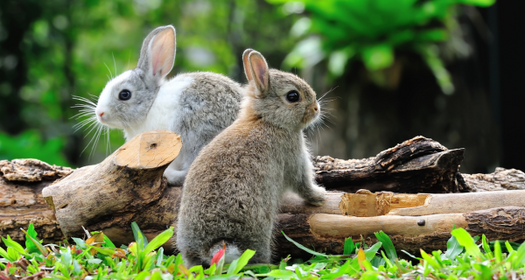

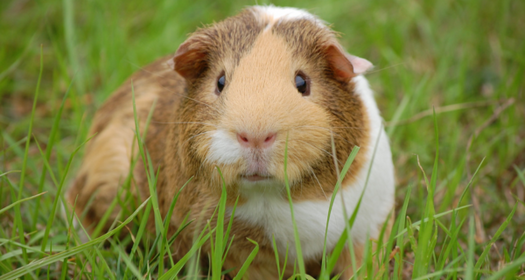
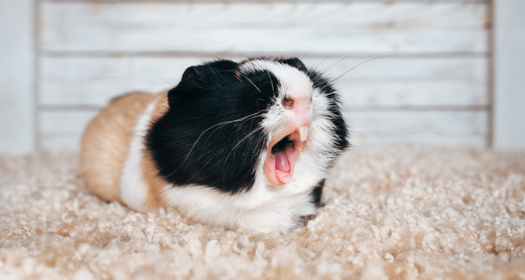
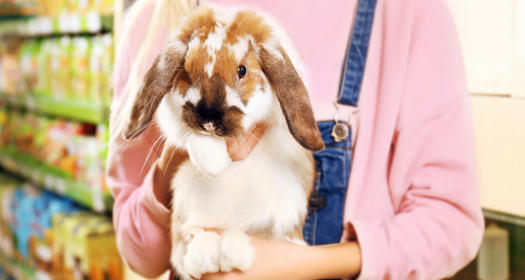




Leave Comment Below